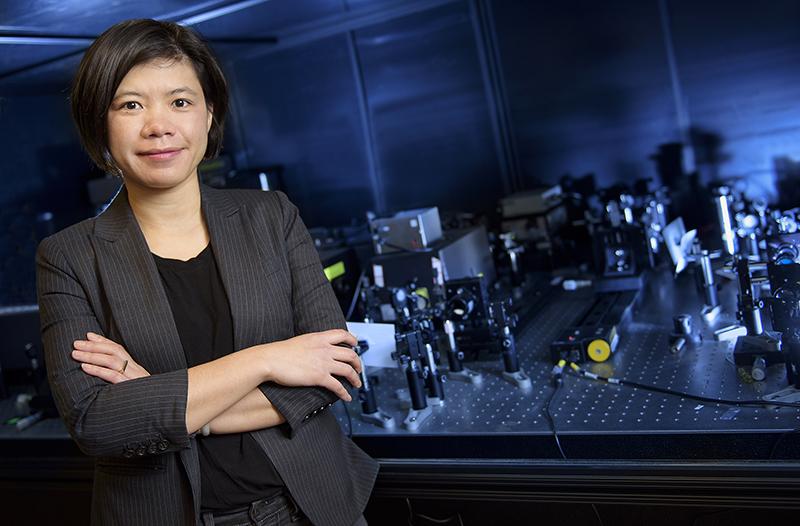By Heather Hamilton, contributing writer
Researchers at Purdue University and the National Renewable Energy Laboratory have discovered a new material with the capacity to double the efficiency of solar cells, as announced in a paper originally published in Science. Containing inorganic materials — iodine and lead — and the organic material methyl-ammonium, the new hybrid perovskite crystalline structure makes solar cells function at two-thirds efficiency by not losing as much energy to heat, all without a substantial increase in cost. This is important because, despite the abundance of sun, in 2013, only 1% of the grid energy produced worldwide was from solar panels.

Assistant professor Libai Huang. Image source: Purdue University.
Purdue assistant professor of chemistry Libai Huang further noted that the new material would create solar cells that are thinner than conventional silicon solar cells while remaining flexible, inexpensive, and easy to make.
“My graduate students learn how to make it in a few days,” she said.
Typically, solar cells adhere to the Shockley-Queisser Limit, meaning that they’re only one-third efficient. They most commonly use silicon as a semiconductor, and because of the band gap (the amount of energy needed to boost an electron from a bound state to a conducting state), they transmit only one-third of light energy into current. This is because incoming photons sometimes have more energy than the band gap so the electrons they generate, called hot carriers, have more energy than they need to change state. After a time, the hot carriers give up their energy as heat. In silicon, these hot carriers last for only a picosecond, traveling only 10 nanometers through the material, which is not far enough to emerge from the cell. The extra solar energy is thus lost as heat, which results in inefficient solar cells.
Purdue University and the National Renewable Energy Laboratory researchers can now track the range of motion and the speed of hot carriers by using fast lasers and microscopes, which has allowed them to find a way to utilize the hot carriers.
“The distance hot carriers need to migrate is at least the thickness of a solar cell, or about 200 nanometers, which this new perovskite material can achieve,” said Huang. “Also, these carriers can live for about 100 picoseconds, two orders of magnitude longer than silicon.”
“This study demonstrated that hot carriers in a standard polycrystalline perovskite thin film can travel for a distance that is similar to or longer than the film thickness required to build an efficient perovskite solar cell,” said paper co-author and senior scientist at the National Renewable Energy Laboratory, Kai Zhu. “This indicates that the potential for developing hot carrier perovskite solar cell is good.”
Going forward, the researchers hope to replace the lead with less toxic materials.
“The next step is to find or develop suitable contact materials or structures with proper energy levels to extract these hot carriers to generate power in the external circuit,” said Zhu. “This may not be easy.”
Sources:Purdue University, Science, phys.org
Advertisement
Learn more about Electronic Products Magazine





